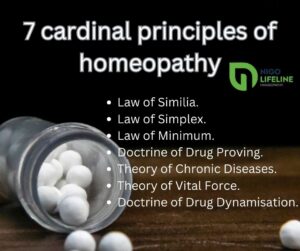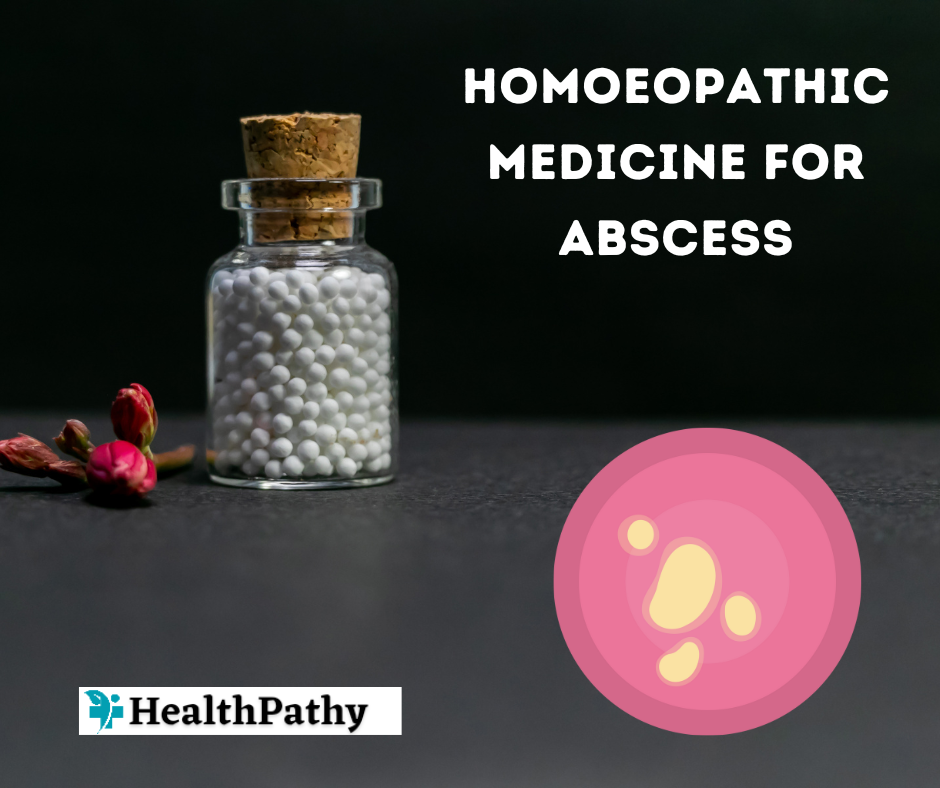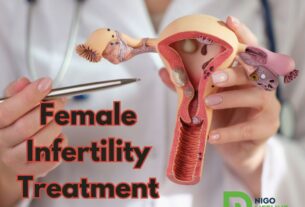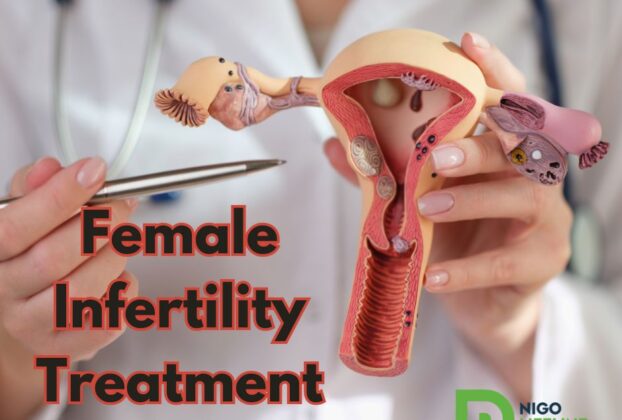7 cardinal principles of homeopathy
Homeopathy is a holistic system of medicine developed by Samuel Hahnemann in the late 18th century. It is based on the principle of “like cures like,”. It means that a substance that causes symptoms in a healthy person can be used to treat similar symptoms in a sick person. The practice of homeopathy is guided by several fundamental principles, often referred to as the “cardinal principles.” These principles help practitioners understand the philosophy and approach of homeopathy in treating patients. Here are the 7 cardinal principles of homeopathy:

Law of Similars (Similia Similibus Curentur):
This is the foundational principle of homeopathy. It states that a substance that can produce specific symptoms in a healthy individual can be used to treat similar symptoms in a sick person. For example, if a substance causes fever and headache in a healthy person, it can be used in a highly diluted form to treat a person with a fever and headache.
Law of Single Remedy:
Homeopathy prescribes a single remedy at a time, aiming to address the totality of a person’s symptoms rather than treating individual symptoms separately. This is done to ensure that the remedy’s effects are clear and accurately observed.
Law of Minimum Dose (Minimum Medicamentum):
Homeopathic remedies are prepared through a process of serial dilution and succussion (vigorous shaking). The principle of minimum dose suggests that the more a remedy is diluted and succussed, the more potent and effective it becomes. The goal is to stimulate the body’s vital force without overwhelming it.
Doctrine of Drug Proving:
The Doctrine of Drug Proving, also known as the Law of Similars, is a cornerstone of homeopathy.
- It’s based on the idea that a substance, when given to a healthy individual in its crude form, will produce a set of symptoms or effects.
- Homeopaths conduct systematic experiments called “provings” in which healthy volunteers take a particular substance in a controlled manner.
- The symptoms and effects experienced by these individuals are carefully recorded. These symptoms are known as “provings” or “pathogenetic effects.”
- The principle is that substances that produce specific symptoms in provings can be used as homeopathic remedies to treat similar symptoms in sick individuals.
- The remedy chosen should match the totality of the patient’s symptoms, both physical and mental.
Theory of Chronic Diseases:
Homeopathy believes that many chronic diseases are caused by a deep-seated imbalance in the body’s vital force.
- The Theory of Chronic Diseases posits that acute diseases can be suppressed by conventional treatments (such as antibiotics or corticosteroids), but their underlying causes may not be fully resolved.
- Over time, these suppressed acute diseases can lead to chronic diseases, characterized by deeper and more persistent symptoms.
- Homeopathy aims to address the root causes of chronic diseases by stimulating the vital force to restore balance and health.
- Homeopathic remedies are prescribed based on the patient’s individual symptom picture, taking into account both the chronic disease’s characteristics and the patient’s constitution.
Theory of Vital Force:
The Theory of Vital Force is central to homeopathy’s understanding of health and disease.
- It posits that there is a vital force or life energy within every living organism that maintains health and balance.
- Disease, in the homeopathic view, is an imbalance or disruption in this vital force.
- Homeopathy seeks to stimulate the vital force to initiate the body’s own healing mechanisms.
- Homeopathic remedies are believed to act as energetic stimuli, helping the vital force return to a state of equilibrium and enabling the body to heal itself.
- This concept is similar to the idea of the body’s self-regulating and self-healing abilities, as seen in other holistic medical systems.
Doctrine of Drug Dynamisation:
The Doctrine of Drug Dynamization, also known as potentization, is a unique aspect of homeopathic remedy preparation.
- It involves serial dilution and succussion (vigorous shaking) of a substance in a specific manner.
- The more a substance is diluted and succussed, the more potent and effective it is believed to become.
- Homeopaths argue that during this process, the vital energy or essence of the original substance is transferred to the solvent, making it therapeutic.
Summary:
These principles collectively form the foundation of homeopathy’s philosophy and approach to healing. These emphasize individualized treatment, the stimulation of the vital force, and the use of highly diluted remedies. Homeopathy has every scientific approach toward the treatment of disease.
Related Articles:


Follow us:










